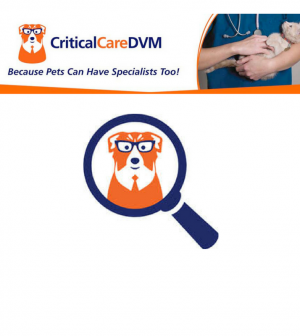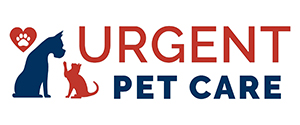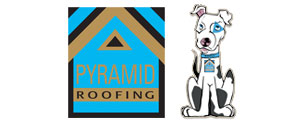- Do you subscribe to Dharma Dog Training’s Newsletter? You should.
- A Unique Campaign from The Humane Society of the United States
- Rabid bats in Omaha- Stay safe, prepared with these tips
- Springtime Activities in Omaha
- Mill Dog Monthly from Bailing Out Benji
- World Spay Day, Legislative Alert in Nebraska
- Attend the Nebraska Rescue Council’s monthly meeting this Saturday
- Five Hard-to-Ignore Reasons to Adopt!
- Paws in Pink to Benefit Breast Cancer Foundation
- VCA, Inc. Acquires MidWest Vet Specialists from Kansas State University
Why your pet is fat and what that means for his life expectancy

If you’ve been measured by a doctor, personal trainer, or anyone else concerned with your body composition, you’ve probably heard about body mass index, percentage of body fat, and ideal weight. The terms “overweight” and “obese” and “morbidly obese” have all been defined and articulated by many medical professionals as they speak on humans. In pets, however, there are no clear distinctions. Different measures by vets can tell you whether your pooch or kitty cat has a problem with weight.
In a popular blog post from Dr. Chrisopher Byers of Omaha’s Critical Care DVM fills us in about obesity in pets, the common causes, and the implications of a pet’s weight being past it’s point of idealness. Find below why your pet is a little (or very) heavy, how you can fix it, and why it’s important, just like it is to yourself, to keep weight at a manageable and sustainable level.
Obesity definition…
While there are very specific definitions for overweight and obesity in people, the definitions in pets are more arbitrary. Dogs and cats are often considered overweight if their weight is >15% above ideal and are obese when weight is >30% of ideal. Unfortunately to date, these criteria have not been confirmed with appropriate studies and there is limited data defining optimal body weight.
In veterinary medicine, body condition scores (BCS) are used to evaluate a pet’s weight. There are 2 scales used most commonly; one is based on a 5-point system and the other is based on a 9-point one.
A 5-point scale used to determine body condition score (BCS) in dogs and cats
A 9-point scale used to determine body condition score (BCS) in dogs and cats
Obesity causes…
In 2012 the Association of Pet Obesity Prevention published 52.5% of dogs and 58.3% of cats in the United States are overweight or obese. There are many factors that contribute to these statistics including:
Breed Predisposition: A breed predisposition to obesity has been shown in certain breeds, particularly:
- Cairn terriers
- West Highland white terriers
- Scottish terriers
- Shetland sheepdogs
- Basset hounds
- Cavalier King Charles spaniels
- Dachshunds
- Beagles
- Cocker spaniels
- Labrador retrievers
Interestingly certain breeds, particularly sight hounds (i.e: Greyhounds, Whippets, etc)., appear to be resistant to the development of overweight and obesity.
Several cat breeds are also over-represented with overweight and obesity, including:
- Sphinx
- Birman
- Ragamuffin
- Shorthairs (British, American, Exotic, Colorpoint)
- Manx
- Persian
Pet Parents: When people are exposed to environments with a high prevalence of overweight and obesity, they often develop inaccurate perceptions of what constitutes a normal body shape. Interestingly this misperception can contribute to an increasing prevalence of overweight and obesity within the pet population.
A recent survey study collected data from 829 dog parents through personal interviews; they were asked to subjectively evaluate their dogs’ body condition score (BCS). Additionally both the pet parent’s body mass index (BMI) and the dog’s BCS were assessed. Obese dogs were twice as likely to have obese owners as non-obese dogs were. Furthermore dog parent underestimation of their pet’s BCS was nearly 20 times more common in dogs that were obese than in normal or underweight dogs. Given this information, pet parent misperception of an obese dog’s BCS is a major obstacle in weight management.
Age: Lean body mass declines as an adult animal ages, resulting in a decrease in total daily energy needs. The loss of lean body mass is exacerbated if aging is accompanied by a decrease in voluntary activity. The total daily energy needs of an average-sized 7-year-old dog may decrease by as much as 20% when compared with its needs as a young adult. If food intake does not decrease proportionately with the decreasing energy needs, weight gain occurs. In short, a reduced metabolic rate associated with aging predisposes a pet to becoming overweight or obese.
Neutering: Neutering results in a loss of circulating sex hormones that slow a pet’s metabolism and predisposes the neutered animal to becoming overweight or obese. Changes in sex hormones after neutering directly affect the hunger center in the brain through changes in specific hormones (leptin and ghrelin) and possibly indirectly by certain behaviors that predispose to weight gain. Neutering can also change a pet’s feeding pattern.
Medications: Certain medications can contribute to obesity in pets. Phenobarbital, a common anti-seizure medication, often causes increased appetite. The increase in food consumption contributes to a worsening body condition, resulting in overweight or obesity. Glucocorticoids (i.e.: prednisone) stimulate glucose (blood sugar) and abdominal fat production that can contribute to fat deposition and weight gain.
Nutrition: Understandably diet can contribute to excessive weight gain in dogs and cats. The number of meals and snacks fed, the consumption of table scraps, and an animal’s presence when owners prepare and/or eat their own meals all contribute to weight gain.
Interestingly the cost of pet food may have an effect on body weight; a study showed obese dogs were more likely to be fed a higher volume of cheaper brand foods than premium brands.
Fat Tissue: Excessive fat (adipose) tissue impacts pet health through two main mechanisms. Excessive fat deposition has several physical effects on the body, including:
- Excessive weight bearing
- Constriction of upper airway
- Inability to groom
- Insulating effect to prevent heat relief
Fat tissue also produces various hormones (called adipokines) that help regulate energy balance and metabolism, as well as immune system function. When too much fat is present, adipokines can actually contribute to a state of chronic inflammation that when untreated readily contributes to various obesity-related disorders.
Obesity consequences…
Just as overweight and obesity have many possible consequences in people, so too do they have serious health implications in dogs and cats.
Longevity: Studies have shown pets fed free-choice have higher body condition scores (BCS) than those fed a calorie-restricted diet. Additionally the animals that were fed a specific amount of food lived 1.8 years longer, had improved glucose/sugar tolerance, and had a reduced risk of orthopedic disorders such as osteoarthritis.
Hormone Diseases: Diabetes mellitus (sugar diabetes) and hypothyroidism (low thyroid hormone concentration) frequently develop in overweight cats and dogs, respectively. Hyperadrenocorticism (Cushing’s disease) is also associated with an increased accumulation of fat in the abdominal cavity than can contribute to overweight and obesity.
Dr. Byers
Orthopedic Conditions: Various orthopedic conditions are commonly encountered in overweight and obese patients, particularly osteoarthritis. In dogs, food intake appears to have a significant effect on the development of osteoarthritis with disease severity directly associated with unrestricted feeding.
Heart Disease & High Blood Pressure: Overweight and obesity have a marked effect on the function of the respiratory system. These conditions can exacerbate health conditions, particularly:
- Laryngeal paralysis
- Asthma
- Tracheal collapse
- Brachycephalic airway syndrome
As in people, overweight and obesity can affect blood pressure. Untreated hypertension (high blood pressure) causes damage to various organs, most notably the kidneys, brain and heart. Read more here about the importance of blood pressure monitoring.
Urinary and Genital Disorders: Obese animals may have more difficulty giving birth due to the presence of excess fat issue in and around the birth canal. Many overweight and obese dogs develop a syndrome called urethral sphincter mechanism incompetence that causes them to leak urine when lying down or sleeping.
Cancer: A limited number of scientific investigations have evaluated the correlation between overweight/obesity and cancer development. Some of the data suggest overweight and obese dogs and cats have an increased risk of forming cancers in their bodies, including urinary bladder and mammary (breast) malignancies.
Combatting obesity…
Even though overweight and obesity are becoming more common in our companion animals, we thankfully have several modalities for treating excess weight and monitoring the success of these various interventions. Effective management of excess weight requires a multimodal approach, and may include:
- Dietary modifications
- Lifestyle changes
- Drug therapy
Various studies have shown pairing interventions that might benefit both pet and pet parent (i.e.: pets and families exercising together) can be successful weapons to fight overweight and obesity in dogs and cats. Primary care veterinarians are the essential first responders in the fight against overweight and obesity. These doctors can provide pet parents with some appropriate advice, and can help formulate a viable weight loss program for overweight and obese pets. However just as with people, weight loss doesn’t always happen as planned. In these instances, working with a board-certified veterinary nutrition specialist is strongly recommended to ensure a pet’s diet is maximally formulated to promote healthy weight loss. Consulting with a board-certified veterinary sports medicine and rehabilitation specialist can also be an invaluable step to develop an effective and safe exercise regime for a pet.
The take-away message about obesity…
Excess weight is an increasingly common health problem in dogs and cats around the world, and overweight/obesity-associated risks continue to increase. Fat tissue is a metabolically active organ, producing chemicals that contribute to chronic inflammation. Overweight and obesity are treatable, and several effective therapeutic interventions are available. A collaborative effort between pet parents and veterinarians (including board-certified nutrition specialists) is required to fully intervene in a healthful manner and to monitor the success of prescribed weight loss techniques.
Related Posts
Latest News
-
3 Tips for Pet Owners on Training Rescue Dogs
Owning a rescue dog can take some work compared to...
- Posted 3 weeks ago
- 0
-
Choosing the Right Pet for Your Lifestyle
Are you thinking about getting a pet but unsure what...
- Posted 1 month ago
- 0
-
How to Make Your Rescue Pet as Comfortable as Possible
Did you bring home a new pet from a shelter...
- Posted 2 months ago
- 0
-
How Having A Pet Can Change Your Life
Having a pet can open your heart in ways that...
- Posted 7 months ago
- 0
-
How To Improve The Life Of Your Senior Pet
Do you have an elderly fur baby and want to...
- Posted 7 months ago
- 0
-
Springtime Activities To Enjoy With Your Furry Friends
Are you preparing for warmer weather and want some ideas...
- Posted 8 months ago
- 0
-
Pros And Cons Of Microchipping Your Pets
Have you considered whether your pets should be microchipped and...
- Posted 9 months ago
- 0























You must be logged in to post a comment Login